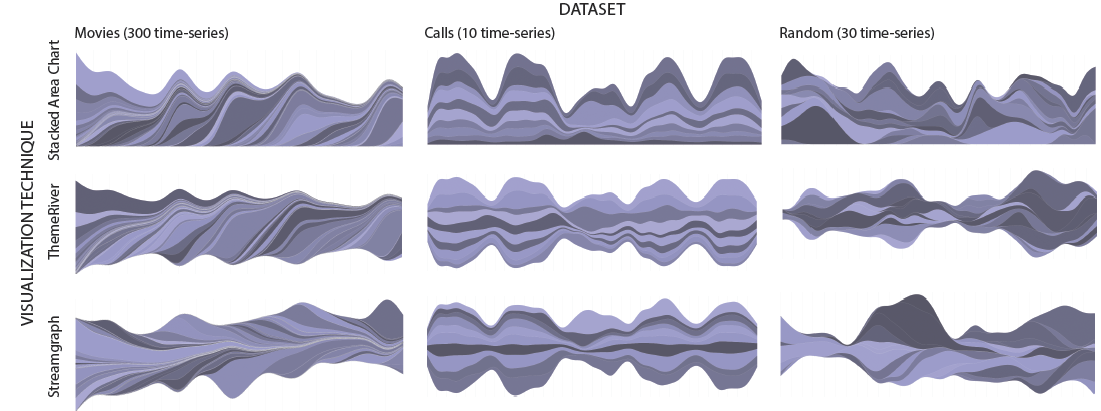
Assessing the Readability of Stacked Graphs
Stacked graphs are a visualization technique popular in casual scenarios for representing multiple time-series. Variations of stacked graphs have been focused on reducing the distortion of individual streams because foundational perceptual studies suggest that variably curved slopes may make it difficult to accurately read and compare values. We contribute to this discussion by formally comparing the relative readability of basic stacked area charts, ThemeRivers, streamgraphs and our own interactive technique for straightening baselines of individual streams in a ThemeRiver. We used both real-world and randomly generated datasets and covered tasks at the elementary, intermediate and overall information levels. Results indicate that the decreased distortion of the newer techniques does appear to improve their readability, with streamgraphs performing best for value comparison tasks. We also found that when a variety of tasks is expected to be performed, using the interactive version of the themeriver leads to more correctness at the cost of being slower for value comparison tasks.







